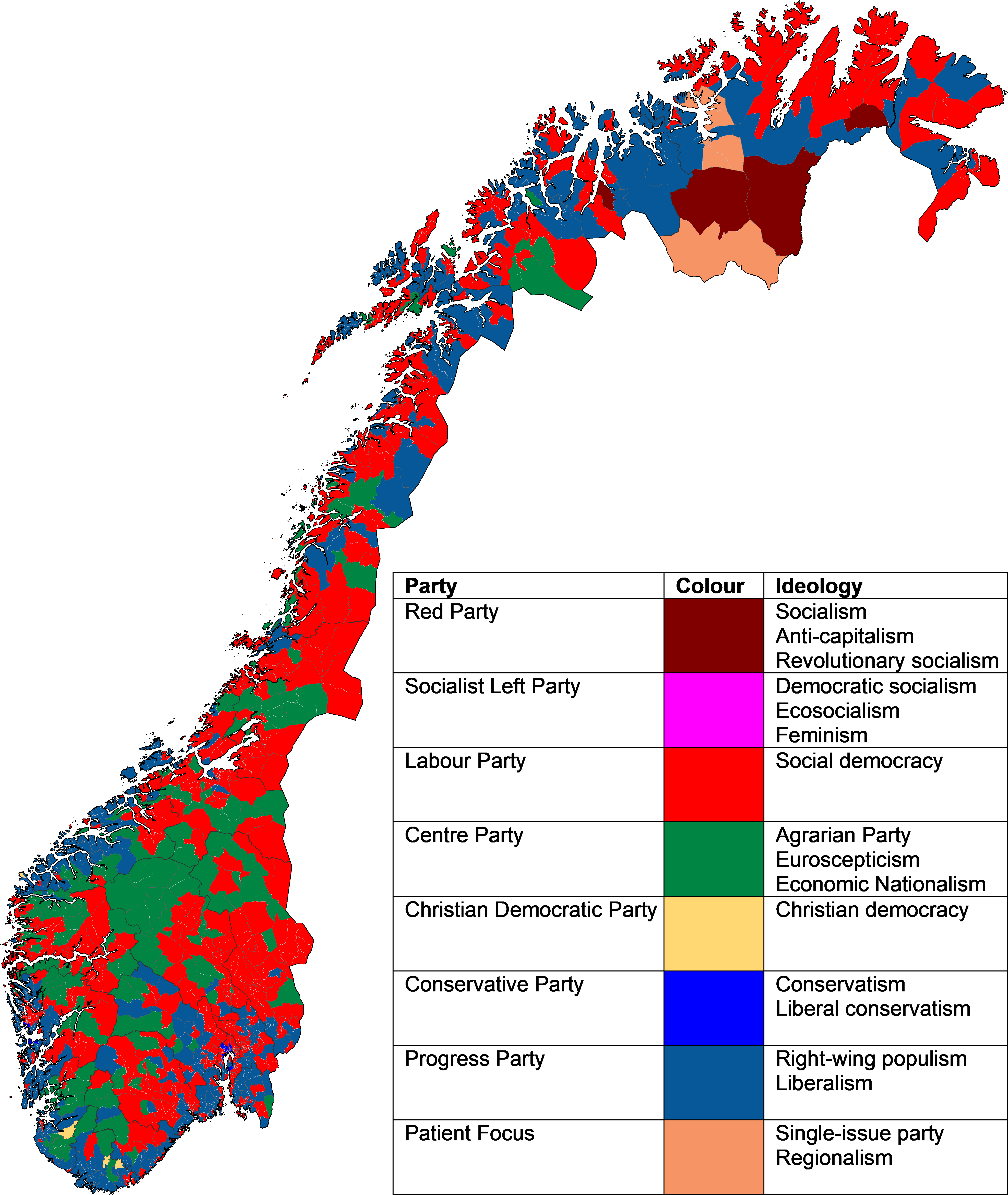Largest Political Party by Constituency Map Norway 2025


Marcus Rodriguez
Historical Geography Expert
Marcus Rodriguez specializes in historical cartography and geographic data analysis. With a background in both history and geography, he brings unique...
Geographic Analysis
What This Map Shows
The "Largest Political Party in Each Constituency in the 2025 Norwegian Parliamentary Election" map visually represents the dominant political forces across Norway’s constituencies. Each region is color-coded to indicate which political party holds the most influence in that specific area, allowing viewers to quickly identify where each party's support is strongest.
As we delve deeper into the landscape of Norway's political scene, it's essential to consider how these party distributions reflect broader societal trends, voter sentiment, and regional characteristics.
Deep Dive into Norway's Political Landscape
Norway's political framework operates within a multi-party system, with several parties vying for representation in the Storting (parliament). The primary political parties include the Labour Party (Arbeiderpartiet), Conservative Party (Høyre), Progress Party (Fremskrittspartiet), and the Socialist Left Party (Sosialistisk Venstreparti), among others. This diversity reflects a broad spectrum of ideologies, from conservative to socialist, and serves as a fascinating case study in contemporary governance.
Interestingly, the political landscape in Norway is not uniform; instead, it varies significantly across different regions. For example, urban areas such as Oslo and Bergen typically show stronger support for left-leaning parties like the Labour Party and the Socialist Left Party. In contrast, rural areas may lean more towards the Conservative Party and the Progress Party, reflecting the differing priorities and concerns of urban versus rural voters.
Voter demographics also play a crucial role in shaping party strength. Younger voters tend to favor progressive agendas and environmental policies championed by parties like the Green Party (Miljøpartiet De Grønne). In contrast, older voters often gravitate towards more established parties that promise stability and continuity. This generational divide is crucial, especially as Norway continues to grapple with issues like climate change, economic sustainability, and immigration.
Statistics from recent elections show that while the Labour Party has traditionally been a stronghold, the rise of populist sentiments has allowed parties like the Progress Party to gain traction, especially among working-class voters concerned about job security and welfare policies. With the 2025 elections on the horizon, we can expect a fierce competition as parties strategize to appeal to these diverse voter bases.
Regional Analysis
When examining the map, it's evident that Norway's political affiliations are not homogenous. The northern regions often display unique political preferences. For instance, the Finnmark constituency has historically supported the Labour Party, reflecting the region's focus on social welfare and resource management policies that resonate with its residents.
Conversely, in the southern part of the country, particularly in areas like Agder, the Conservative Party holds considerable sway, likely due to its emphasis on economic growth and regional development. This divergence is not merely a matter of political preference; it symbolizes underlying economic conditions and cultural values that vary across Norway's topography.
The map also highlights constituencies where smaller parties, such as the Red Party (Rødt) or the Green Party, have made significant inroads. These parties often find their strongest support in urban centers, where progressive values resonate more profoundly. For instance, Oslo is a bastion for the Green Party, reflecting its residents' heightened environmental consciousness.
Significance and Impact
Understanding the distribution of political power through this map is crucial for several reasons. Firstly, it informs policymakers and political analysts about where to focus their resources and campaign efforts as they prepare for elections. Secondly, it provides insight into the changing dynamics of Norwegian society—what issues matter most to different communities, and how these preferences may shift over time.
Moreover, the implications of these political divisions extend beyond mere electoral results; they influence policy decisions that affect daily life in Norway. Issues like climate action, economic development, and social welfare are directly tied to the political party in power, making it imperative for voters to understand the landscape before making their choices.
In conclusion, as we approach the 2025 parliamentary elections, the map of the largest political party by constituency will serve not only as a snapshot of current political affiliations but also as a reflection of Norway's evolving identity. With shifts in voter sentiment and emerging priorities, this landscape is likely to change, making the upcoming election a significant event to watch.
Visualization Details
- Published
- October 1, 2025
- Views
- 54
Comments
Loading comments...